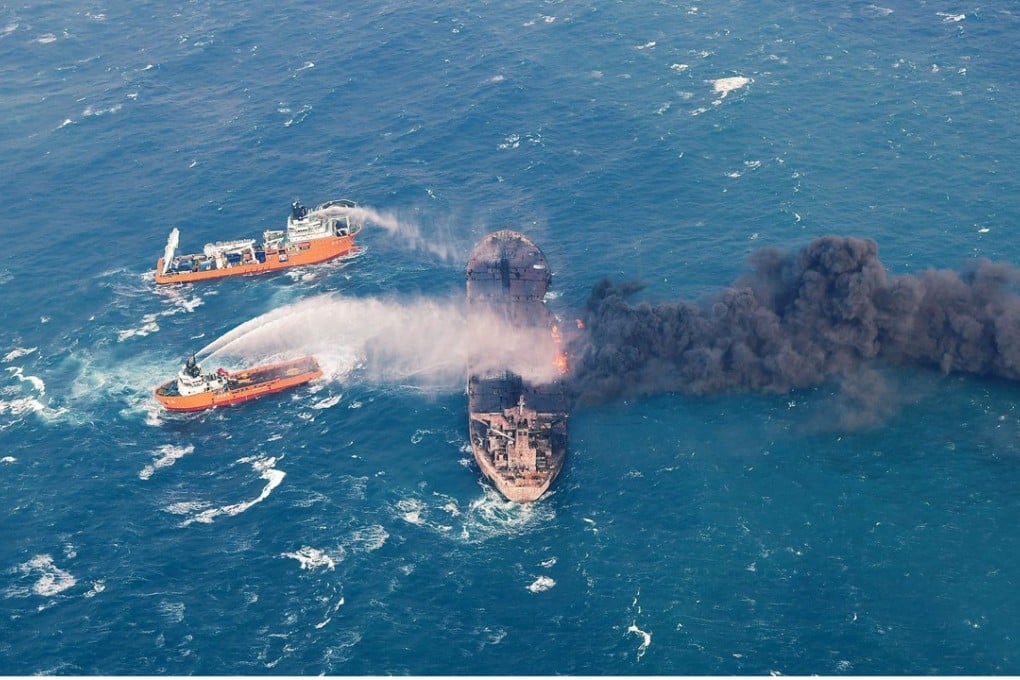East China Sea oil slick triples in size along whale migration route
Chinese authorities say biggest spill from sunken Iranian tanker widens to cover more than 330 sq km

The spill from a sunken Iranian tanker off China’s east coast has more than trebled in size, just over a week after the ship sank in a ball of flames.
Authorities spotted three oil slicks with a total surface area of 332 square kilometres (128 square miles), compared to 101 sq km reported on Wednesday, the State Oceanic Administration said late Sunday.
The Sanchi, which was carrying 136,000 tonnes of light crude oil from Iran, collided with Hong Kong-registered bulk freighter the CF Crystal in early January, setting off a desperate race by authorities to search for survivors and stave off an environmental catastrophe.
The bodies of only three of the ship’s 30 Iranian and two Bangladeshi crew members have been found.
Three coastguard vessels were on the scene on Sunday night assessing the spill, the oceanic administration said.